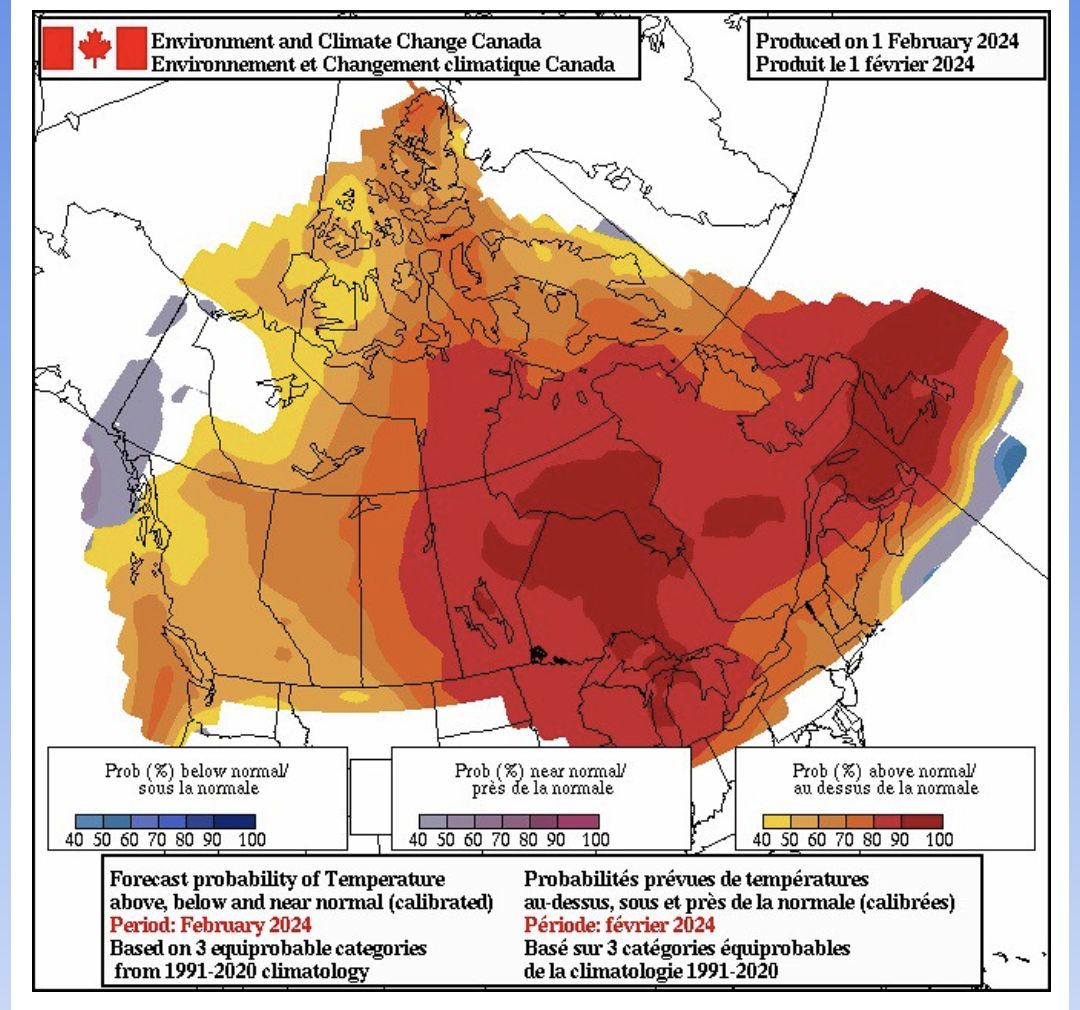**** Info via Environmental Canada
February temperature outlook
Today, February 2 is Groundhog Day. Who will get winter and who will get spring? According to legend, if the groundhog sees a shadow, six more weeks of winter; if not, spring is on its way.
When it comes to weather predictions, even if we’re not furry forecasters we have the deets! Here’s our February temperature outlook to see whether temperatures in your region will be below or above average.
The forecasts are categorized as follows:
- Blue is the likelihood that temperatures will be below normal.
- Grey to purple is the likelihood that temperatures will be near normal.
- Yellow to red is the likelihood that temperatures will be above normal.
- White is uncertainty about the temperature trend this month.

Long-range forecast user guide.
January overview
Across Canada, temperatures in January were a tale of two halves. The eastern regions, from Atlantic Canada to Manitoba and most of Nunavut, experienced above-normal temperatures. In Nunavut, areas from Hudson Bay to Frobisher Bay were seven degrees above normal for the month. Iqaluit reached 3.3°C on the January 15, not only setting a record but also reaching a temperature of 20 degrees above what it should have been for this time of year.
It was a completely different story in the west, with a below-normal month from Saskatchewan to the West Coast, including Yukon and the Northwest Territories. Mid-month was particularly frigid, with Edmonton Airport hitting -45.1°C and setting a record low.

During the month, precipitation was above-normal in areas around Hudson Bay, stretching back to eastern parts of the Northwest Territories, parts of the Yukon, British Columbia and southern Ontario. British Columbia had a few weather systems that brought tropical moisture to the region. In Windsor, Ontario, the southernmost part of the country, it was a wet month with over 90 mm of precipitation, exceeding its normal by 50%. Meanwhile, it was below normal for most of Atlantic Canada, parts of northern Ontario, the Prairies, British Columbia, the Northwest Territories and northern Nunavut.

.



